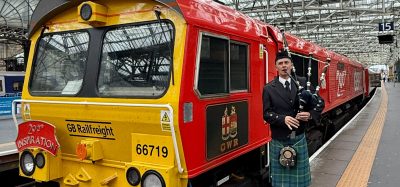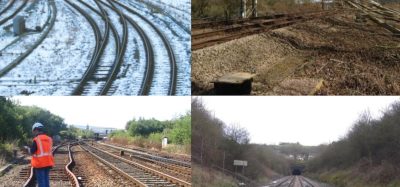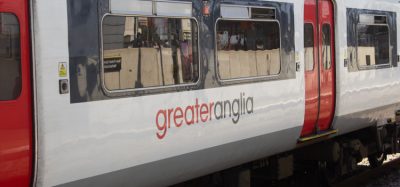Helsinki-Vantaa Airport to receive railway link
Posted: 6 June 2007 | | No comments yet
The planning of Finland’s first airport line is well under way and construction is scheduled to begin in 2008 on the outskirts of Helsinki. A working group has recommended that the line will be constructed with normal state budget funds. The project is expected to cost approximately €420 million (at the May 2006 cost level). The 18km line in Vantaa will offer a rail link to the Helsinki-Vantaa airport, plus making it possible to build new residential areas and workplaces along good traffic connections.
The planning of Finland's first airport line is well under way and construction is scheduled to begin in 2008 on the outskirts of Helsinki. A working group has recommended that the line will be constructed with normal state budget funds. The project is expected to cost approximately €420 million (at the May 2006 cost level). The 18km line in Vantaa will offer a rail link to the Helsinki-Vantaa airport, plus making it possible to build new residential areas and workplaces along good traffic connections.
The planning of Finland’s first airport line is well under way and construction is scheduled to begin in 2008 on the outskirts of Helsinki. A working group has recommended that the line will be constructed with normal state budget funds. The project is expected to cost approximately €420 million (at the May 2006 cost level).
The 18km line in Vantaa will offer a rail link to the Helsinki-Vantaa airport, plus making it possible to build new residential areas and workplaces along good traffic connections.
The airport line, which in the master plan stage was called the Marja Line, has been renamed the Ring Rail Line, since it will run between the main line to the north and the Martinlaakso commuter line via the airport. The Ring Rail Line will form an urban rail loop that will make it possible to use commuter trains more efficiently. Plans call for services to operate at 10-minute intervals in both directions on the new line. The fastest journey time from the centre of Helsinki to the airport will be approximately half an hour.
The Ring Rail Line will bring the 12 million passengers who use the airport each year within the sphere of rail traffic. The project will also make it possible to build housing for approximately 40,000 residents and jobs for about 60,000 persons along good public transport connections in Vantaa, which is located next to Helsinki.
Tunnel under the airport
The new line will be 18km long, including over 8km in a tunnel that will pass under the Helsinki-Vantaa Airport. Seven new stations are planned between Vantaankoski and the main line to the north: Vehkala, Petas, Kivistö and Leinelä on the surface and Aviapolis, Airport Terminal and Ruskeasanta underground. The Vehkala and Petas stations will be built at a later date. Provisions have also been made for an underground station in Viinikkala. Excavation work will be carried out in sufficient scope so that the station can be built later on without disturbing traffic.
The Ring Rail Line will serve approximately 200,000 residents living within a radius of one kilometre from stations. Approximately 200,000 jobs will also be located within this distance in the future.
Services to the airport
At present, public transport connections to the airport are based on bus services. Since the Ring Rail Line traffic system will be based largely on feeder traffic, this will change bus lines completely.
The Helsinki Metropolitan Area Council is responsible for arranging public transport services in Helsinki and the neighbouring municipalities. It also purchases urban rail services from VR Limited. Services on the Ring Rail Line can be purchased within the framework of existing agreements between the Helsinki Metropolitan Area Council and VR Limited. Trains will be supplied by a company that was established a few years ago for this purpose (Pääkaupunkiseudun Junakalusto Oy).
The Ring Rail Line will allow bus traffic to be replaced by rail traffic. Bus traffic will be reduced particularly in the inner city and the highways leading to it. The line will also reduce private car traffic and thus environmental impacts.
Attention paid to environmental matters
In planning the Ring Rail Line, special attention has been paid to environmental matters. Studies show that the project will not have a significant effect on groundwater areas, for instance.
Nature studies of the rail environment conducted in connection with the master plan indicated that there were flying squirrels living in the western part of the line. The route was then moved slightly so as not to disturb flying squirrels. The project can be conducted without destroying or impairing flying squirrels’ breeding and resting places.
Groundwater has been monitored for several years along the line and monitoring will be expanded as the project proceeds. Monitoring of groundwater and settling is intended to provide adequate information to support planning so that negative impacts can be avoided.
The railway tunnel will cross paths with the tunnel that brings water to the Helsinki metropolitan area from Lake Päijänne in Viinikkala. The Päijänne tunnel will be reinforced before the railway tunnel is built in order to minimize risks.
Station planning with an eye for clarity
The intention is to make all stations clear and open spaces which are safe and easy to get around. Connections to the surface will be via escalators and lifts.
Surface stations will have covered stairs and lifts leading to platforms which will also be covered for at least 100 metres. Platforms will be 225 metres long, allowing trains with three train sets, each measuring 75 metres. Platforms will be located between tracks. Track geometry will be planned so that platforms can later be extended to a length of 270 metres without significant geometry changes. Space has been reserved for social, business and technical facilities at stations.
Airport and Tikkurila stations key nodes
The location of the Airport Terminal station and arrangements for changing levels are based on the Helsinki-Vantaa Airport’s long-term development plan. In that plan the most important building serving land traffic is a new land traffic centre that will connect the Airport Terminal station to the airport’s international terminals, bus and taxi stations and a ‘people mover’ station serving future satellite terminals.
The land traffic centre will also include baggage facilities for arriving passengers and check-in desks for departing passengers. Escalators and lifts will be located at both ends of the underground station.
At the northern end of the station, passengers can also get from the platform level to the upper lobby and proceed from there to the domestic and international terminals. At the southern end of the station, there will be connections to nearby facilities and possibly a bus terminal.
The Tikkurila station is located on the main line leading to the north and will be an important transfer station. Long-distance trains and all commuter trains on the line stop in Tikkurila, making this a natural place to transfer to the Ring Rail Line. Many measures will be taken to improve passenger comfort and facilitate transfers at the Tikkurila station in connection with the construction of the Ring Rail Line. In the first stage, the platform roof will be built as well as new facilities for changing levels.
Two tracks for commuter traffic
The Ring Rail Line will be a two-track, electrified line with blocking system in both directions, remote-control and automatic train protection. Electric commuter trains will operate on it and the new line will help form an integrated urban rail network, separate from long-distance traffic.
According to plans the line will have a maximum speed of 120km/h with the exception of the area around the Vantaankoski station (80-100km/h), Kivistö (100km/h) and the junction with the Kerava urban line (80km/h). The maximum grade will be 0.22%.
Over 8km in a tunnel
The tunnel portion of the Ring Rail Line will be 8.1km long, including the space reserved for the Viinikkala station and the Aviapolis, Airport Terminal and Ruskeasanta stations. Technical and safety facilities will be located in stations and connecting corridors. Pumping stations and collector basins will be built at stations and the lowest points in the tunnel.
The tunnel will have two tubes with connecting corridors and shafts and access tunnels leading to the surface. The width of each tube is 7.2 metres.
The distance between the tracks in the tunnel will range from 22.6 to 32.6 metres, which makes it possible to excavate all access tunnels between the tubes. Traffic using access tunnels will never need to cross tracks.
The connecting corridors will be excavated at approximately 200-metre intervals in the rock pillar continuing between the railway tunnels. Connecting corridors will be separated from each tube by compartmentalized structures that will form a smoke trap. In accident situations it will be possible to exit along the connecting corridors through the smoke trap into the adjacent tube.
A vertical shaft to the ground level will be excavated from about every third connecting corridor (at intervals of approximately 600 metres), where emergency stairs will be built along with a smoke exhaust and pressure equalizing shaft. The distance between the shaft at the airport and the next shaft to the east will be 1,200 metres, however, because of the second runway and a depression in the rock after that. The tunnel will be insulated to prevent freezing up to 300 metres from the mouths.
Numerous bridges
The project will include over thirty bridges. The most important bridges will be over Ring III, at the Vehkala and Petas stations, under the Hämeenlinna motorway, over the River Vantaa and in Koivukylä, where the line will cross over the main line to the north. Preliminary plans were prepared for bridges well in advance to help evaluate feasibility and costs. Different options were compared for the most important bridges in terms of costs and the environment. The bridge over the River Vantaa will be located in a culturally and naturally valuable landscape and the bridge over the main line will be quite visible in the midst of fields and residential areas.
The bridge over the main line will follow the same principles as the junction with the direct line from Kerava to Lahti, which was opened in 2006, with the bridge forming a trough for the line. The walls of the trough will serve both as load-bearing structures and as noise barriers. This will allow the total height of the bridge to be fairly low. In the case of the Ring Rail Line, the bridge will present new structural and esthetic challenges since the line will have two tracks and the bridge will therefore be wider.
Different financial models studied
The estimated cost for the Ring Rail Line is €420 million. This also includes improvements to Highway 3 and the first stage of the Tikkurila travel centre. A working group that studied financing models submitted its report to the Ministry of Transport and Communications in February. The working group concluded that budget financing is the most economical way to build the line.
In addition to budget financing the working group considered a project management model, a public-private partnership model and different variations on these. The working group drew special attention to the effects of different models on costs, timetables, quality, risk management and innovation possibilities.
In the opinion of the working group, a public-private partnership model would not result in benefits because technical specifications are tight and the line will run through an area where there are no degrees of freedom. Many built areas restrict the line and limit the builder’s possibilities to look for alternatives.
Budget financing model is most economical and flexible
The line’s track structures and tunnel construction will be strictly specified, so there is not a lot of freedom in planning and construction. Consequently possibilities to shift risks and take advantage of innovations are limited. No significant differences were found between options in terms of construction and maintenance costs, either. The key criterion for comparing options is therefore financing costs. These are lowest with a budget financing model and highest with a private financing model. In the financing model used by the Finnish Rail Administration in similar development projects, Parliament gives a project an authorisation that covers all the costs of the project. Construction takes place according to the selected procurement strategy, taking into consideration the demands and conditions of each site and the prevailing market situation. Tenders are invited as planning and construction proceed.
In the budget financing model the ordering party retains decision-making power and can flexibly use this power. The model is quite suitable for track projects in which construction must be arranged so as not to disturb traffic any more than is necessary, in the middle of existing infrastructure, and coordinating many different technical fields.
State and city will share costs
According to the working group’s report, the state and the City of Vantaa should divide costs, with the state paying about 70-75% and Vantaa approximately 25-30%. The working group has proposed that the state and the City of Vantaa should sign a letter of intent concerning the division of costs as well as the line and roads, streets and stations along the line.
The division of costs is based on the principle that the state will pay for permanent way and related systems, railway tunnels, railway bridges, the Airport Terminal station and the necessary road connections. The City of Vantaa on the other hand will pay for building other stations and streets.
The Cabinet Economic Policy Committee in the previous Government took a favourable attitude towards the project, and the new Government that was recently appointed is expected to give the project the green light this year.
According to the working group’s proposal, the preparation of the project will continue on a rapid timetable. A final agreement concerning the line can be made after financing has been ensured for the project. The City of Vantaa has already started town planning of the area. The line could be ready in 2013 at the earliest.
What next?
Together with the City of Vantaa, the Finnish Rail Administration will continue planning the line and ensuring the preconditions for construction by starting permit processes, which require long handling periods and preparing the necessary agreements concerning the construction and maintenance of the line, connecting roads and streets and stations.
The further planning of the line, together with studies, will begin in May or June 2007. This will make it possible to start procuring land andconstruction planning in early 2008 and actual construction later that year. Tunnel construction will take the longest time and will determine the timetable for the project as a whole. The line can go into operation in stages, however, beginning between Vantaankoski and Kivistö. If construction starts as planned, the line could becompleted in 2013 according to the tentative timetable.
About the author
Mr Harri Yli-Villamo got his degree in Master of Science from Helsinki University of Technology in 1990. After graduation he has been working with several infrastructure and industry projects. From September 1993 until the end of 1994, he was visiting the University of Washington in Seattle. Mr Yli-Villamo has been working since 2002 at the Finnish Rail Administration. He has been a project manager to several master plan designs and from the year 2005 the Head of the Project Planning Unit. In addition to planning issues he has been very active with several R&D projects.
Stay Connected with Global Railway Review — Subscribe for Free!
Get exclusive access to the latest rail industry insights from Global Railway Review — all tailored to your interests.
✅ Expert-Led Webinars – Gain insights from global industry leaders
✅ Weekly News & Reports – Rail project updates, thought leadership, and exclusive interviews
✅ Partner Innovations – Discover cutting-edge rail technologies
✅ Print/Digital Magazine – Enjoy two in-depth issues per year, packed with expert content
Choose the updates that matter most to you. Sign up now to stay informed, inspired, and connected — all for free!
Thank you for being part of our community. Let’s keep shaping the future of rail together!
Issue
Related topics
Infrastructure Developments, Station Developments, Tunnelling







